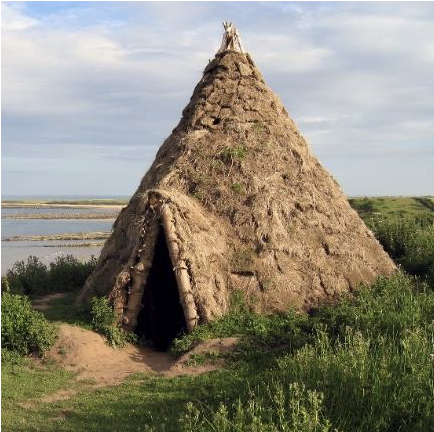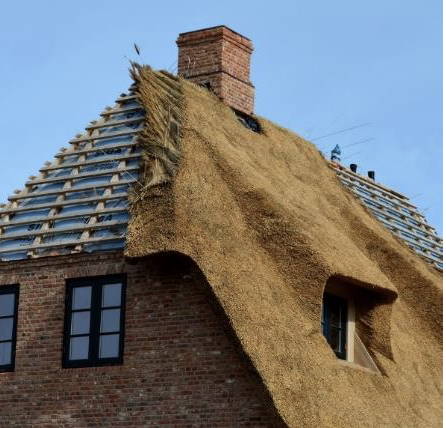Thatched roofs have a rich history in the United Kingdom, and they are not only functional but also add a charming and picturesque quality to buildings. Here are some fun and interesting facts about thatched roofs in the UK, along with examples of buildings and designers:



1. Historical Significance
Thatched roofs have been used in the UK for centuries, with some of the earliest known examples dating back to the Bronze Age (Howick house dates to around 7600 BC). They are an important part of the country’s architectural heritage. Different regions of the UK have their own thatching traditions, resulting in various styles and materials. For example, you can find combed wheat reed thatching in East Anglia and water reed thatching in the South of England.
2. Longevity
The longevity of a thatched roof largely depends on the quality of the materials used and the craftsmanship of the thatcher. Traditional thatching materials, such as water reed or combed wheat reed, tend to last longer than alternatives like straw. Over time, thatch naturally deteriorates due to exposure to the elements. However, regular maintenance and re-thatching can extend the lifespan of a thatched roof. Typically, re-thatching is required every 20-40 years, but in some cases, well-maintained roofs have lasted much longer.
3. Wildlife Habitats
Thatched roofs can create natural habitats for birds, insects, and small mammals. The distinctive thatch structure provides a safe haven for various species, contributing to biodiversity. Thatched roofs also offer protection from predators, and the sheltered environment can help birds raise their young. Thatched roofs create a microcosm for a variety of insects, including butterflies, bees, and beetles. Some of these insects are essential pollinators, contributing to the local ecosystem.
From Timeless Heritage to Luxury Design
Whether preserving historic charm or designing bespoke homes, our expertise delivers exceptional results. Learn more about our approach to Heritage Conservation and Listed Buildings, our tailored Heritage Services, and how our role as a luxury house architect shapes extraordinary spaces.